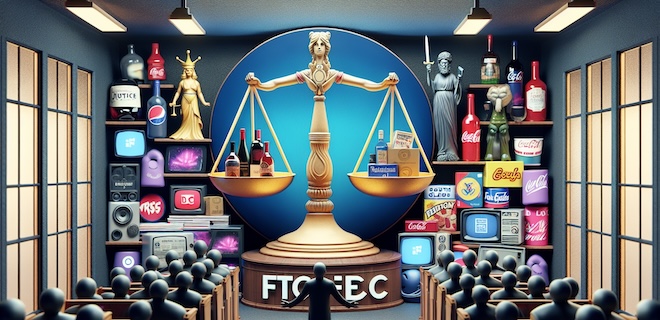
For decades, the Robinson-Patman Act (RPA) sat dormant, almost to the point of irrelevance. That changed in December 2024, when the FTC filed a lawsuit against Southern Glazer’s Wine and Spirits, the largest coast-to-coast distributor of wine and spirits.
The charge? Discrimination against the little guys of retail, claiming, “For years, Southern has violated the Robinson-Patman Act by selling wine and spirits to small, independent ‘mom and pop’ businesses at prices that are drastically higher than the prices Southern charges large national and regional chains. Southern’s discriminatory pricing practices have victimized independent and family-owned neighborhood grocery stores, local convenience stores, and other independent retailers across the country.”
But this case is about more than liquor and preferential pricing. It may signal a broader reckoning with how power is wielded in retail media today, especially by giants like Amazon and Walmart, whose retail media networks have reshaped the rules of competition. The revival of RPA enforcement could force transparency in a system where advertising commitments, not just volume, determine access and pricing. If that’s the case, retail media could be in for a shake-up.
Advertising as a Backdoor to Shelf Space
At the heart of the FTC’s complaint is a question of fairness to the little guys. Smaller retailers shouldn’t pay more for the same products because they lack scale. But in today’s digital retail environment, scale isn’t just about volume; it’s about budget, especially for retail media.
As Brent Oakley, founder of In-Store Marketplace, told AdMonsters, advertising has become a proxy for pricing power. “Amazon is willing to basically give away spots on their digital shelf, but they’re going to overcharge [for advertising],” he explained. “They’ll say, ‘You don’t owe any dollars to put your product on Amazon. But if you don’t guarantee at least X amount of advertising, then you can’t put it on our shelf.’”
This kind of bundled negotiation turns advertising into the new gatekeeper of product visibility, one that smaller retailers and brands often can’t afford.
The scale of this shift is hard to ignore. Experts expect retail media to exceed $106 billion in the coming years, with the largest players reaping the most rewards. According to Adweek, retail media accounts for 68% of Amazon’s profits and 12% of Walmart’s. These profits allow giants to subsidize lower prices, making it harder for smaller grocers and independent retailers to compete.
Oakley pointed out the consequences of that imbalance: A $5.99 bottle of shampoo on Amazon might cost $10.99 at a local store. “That’s exactly what the FTC is trying to address. If you [a brand] offer Amazon certain deals, you should offer the same to Hy-Vee, Meijer, or a small rural grocer.”
Standardization Is Just One Step in a Long Process
While the FTC’s case could help level the playing field, it also introduces new pressures. CPG manufacturers have historically used a variety of factors to negotiate deals with retailers, including promotional volume, shelf placement, and various marketing partnerships. The FTC’s mandate to standardize pricing doesn’t eliminate those realities.
“I think this is step one,” Oakley said “It was the right step to draw the line and see how everybody reacted. I think the first people to get squeezed on this, the most uncomfortable part might be the CPGs and the manufacturer; they’ll need to adjust. And as they do that, they’ll need to be transparent and make sure they’re promoting their causes and letting people know what’s going on because it will have an effect.”
Manufacturers will likely feel pressure to rethink how and where they distribute products, especially to smaller or rural stores, where shipping is more expensive and inventory turns more slowly. That could mean fewer product launches or longer wait times in those markets, even though they stand to benefit most from fair pricing.
“If, all of a sudden, what they thought they were doing for the consumer ends up backfiring … then you start moving a little bit more in the middle,” Oakley said.
Transparency becomes crucial to avoid that kind of backlash, both with retail partners and policymakers. “They need to be transparent with the retailers and the government,” he said. “What they don’t want to do is make it to a point where business can’t be done.”
The FTC’s lawsuit against Southern Glazer’s signals that regulators are paying attention to the power dynamics reshaping modern commerce. If retail media continues to play an outsized role in pricing and product visibility, it will also face increased scrutiny.
This case offers hope for independent retailers. It warns manufacturers to reassess their pricing strategies and reminds retail media giants that dominance without transparency may no longer be sustainable.